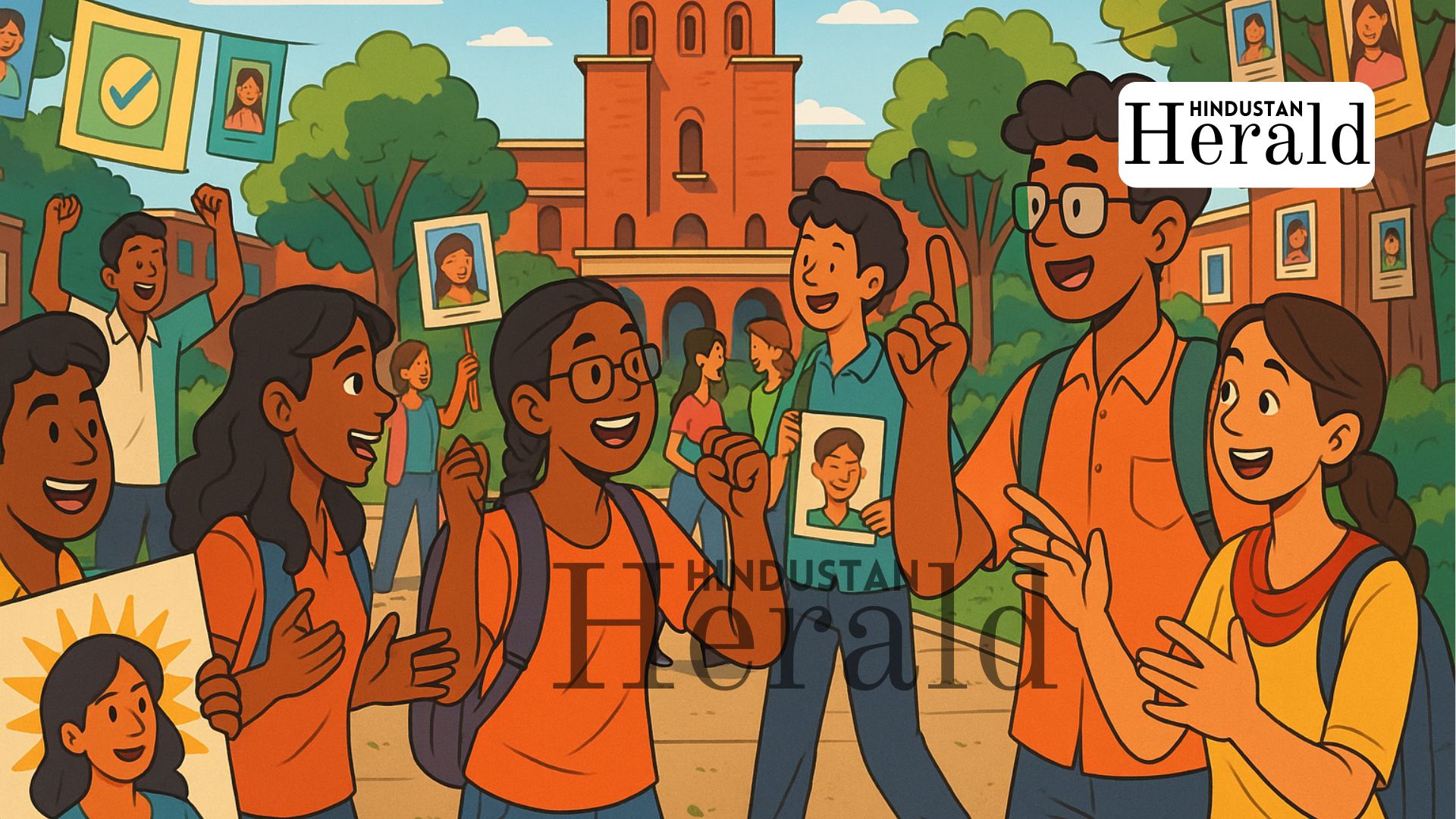New Delhi, September 14: The countdown has begun at Delhi University, where the familiar mix of posters, slogans, and last-minute alliance-making is building towards the Delhi University Students’ Union (DUSU) elections on September 18. After days of scrutiny and withdrawals, the ballot is finally locked with 21 candidates cleared to contest for the four big posts President, Vice President, Secretary, and Joint Secretary.
It is a crowded field, but the bigger story this year is who’s missing. The Aam Aadmi Party’s student wing, ASAP, has quietly stepped aside, choosing not to throw itself into the melee. In a season where every party wants a piece of Delhi University’s student vote, the decision has raised eyebrows and set off a wave of speculation.
A Narrower Battlefield
For decades, DUSU elections have been more than a student exercise. They are treated by political outfits as a rehearsal ground, a testing lab where national strategies are shrunk down to campus level. This year, with ASAP out of the picture, the field falls back to the familiar trio ABVP, NSUI, and SFI all eager to claim the narrative.
The ABVP, which has kept a firm grip on DU politics in recent years, is expected to run a campaign heavy on national pride, safety on campus, and academic performance. The NSUI, struggling for a foothold, will bank on dissatisfaction with fee hikes and administrative delays, while trying to paint itself as the voice of everyday students. The SFI, though smaller in numbers, will aim to sharpen debates on inclusivity and freedom of expression, issues that resonate deeply with certain sections of the student body.
The absence of ASAP simplifies the battlefield but also makes it sharper. There is less room for scattered votes and more pressure on each group to consolidate quickly.
Why ASAP Sat Out
On the face of it, ASAP’s decision looks tactical. Instead of contesting at the union level, the party says it will focus on building strength inside individual colleges. That could mean investing in student councils, cultural societies, and department elections the places where influence often begins quietly, far from the headline-grabbing DUSU stage.
Given that AAP rules Delhi, many expected its student wing to come in strong. The retreat suggests a calculation better to strengthen the roots now than to risk a weak showing against ABVP and NSUI at the top. Or, as some campus observers point out, it may also reflect AAP’s shifting priorities in the run-up to bigger electoral battles outside the university.
The Stakes At DU
There’s a reason national parties take DUSU seriously. DU has produced leaders who went on to shape Indian politics Arun Jaitley, Ajay Maken, Alka Lamba, Vijay Goel. The student union is not just about canteen complaints or library hours; it’s about who gets their first taste of leadership and who learns how to build mass support.
And unlike other student polls, DU elections always carry a sense of theatre. Posters on walls, chants echoing across campuses, and fleets of open jeeps blaring campaign songs turn North and South Campus into political carnivals. The issues at stake are real, but the spectacle is half the story.
What Students Actually Care About
Strip away the party rhetoric, and the concerns bubbling among students are stubbornly familiar.
- Hostels remain scarce, pushing many into overpriced PG accommodations.
- Fee hikes continue to rankle, with accusations that the administration is drifting towards privatisation.
- Safety on campus is an ongoing worry, particularly after reports of harassment cases.
- Representation is another demand, with students from the Northeast, Dalit backgrounds, and women students calling for more visibility in leadership.
- And then there are the everyday gripes patchy WiFi, overcrowded libraries, broken classrooms the kind of frustrations that shape student life more than speeches do.
Yet, as voting day nears, the ground often tilts away from issues and towards sheer mobilisation. Who can get the most students to the polling booth? Who can flood the campus with volunteers, slogans, and energy? These questions usually decide outcomes more than policy promises.
The Final Stretch
In the coming days, DU will turn frenetic. Posters will go up overnight, each plastered over the last in a cycle of one-upmanship. Campaign jeeps will crawl through North Campus traffic with loudspeakers blaring. Canteens will become informal arenas where debates rage between rival groups.
The university’s Model Code of Conduct which restricts campaign expenses and methods will again be tested. Past elections have seen money power, intimidation, and allegations of fake IDs. Whether the administration can keep things fair this time will be closely watched.
But for most students, September 18 will be about the rush of participating, casting a vote, and feeling, even briefly, that they are part of something larger. The result will not just decide who runs the student union. It will also send a signal to national parties about the mood of the young impatient, restless, and eager to be heard.
Stay ahead with Hindustan Herald — bringing you trusted news, sharp analysis, and stories that matter across Politics, Business, Technology, Sports, Entertainment, Lifestyle, and more.
Connect with us on Facebook, Instagram, X (Twitter), LinkedIn, YouTube, and join our Telegram community @hindustanherald for real-time updates.
Covers Indian politics, governance, and policy developments with over a decade of experience in political reporting.






